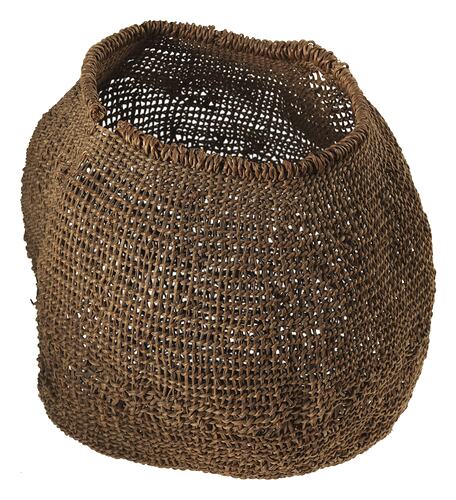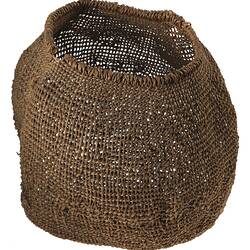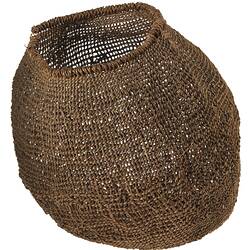Summary
Trugannini, also known as Lydgudggee, was born in 1812 or 1813. She was a Karninghe clanswoman from Port Esperance and Mt Royal district on the Esperance River between Dover and Southport.
Her clan, led by her father Mangerner, was devastated by the arrival of European sealers, whalers and loggers. Before Trugannini reached twenty years old her life had changed from living peacefully with her people to a terrifying fight for survival with her mother killed by sailors, her uncle shot by soldiers, her sister abducted by sealers and Paraweena, to whom she was to be married, murdered by timber-cutters.
Trugannini travelled extensively between 1829 and 1839 as a translator, guide and servant of colonial government employee George Augustus Robinson. After her husband Woorrady died at sea on return from Port Phillip to Tasmania in 1842, Trugannini returned to her traditional territory to the new and ill-fated government establishment at Oyster Cove. There she enjoyed some aspects of her early life by diving for shellfish, visiting Bruny Island, basket-making and hunting in nearby bush. Tareena (baskets) made by Trugannini and other Aboriginal women were sold at the local markets.
In 1874, she moved to Hobart with her guardians, the Dandridge family, where she gave this basket to Miss Dandridge. She continued to enjoy trips back to her beloved homelands through the kindness of Mr Dandridge who learnt to sail in order to facilitate her visits to Bruny Island where she would camp and tell stories of her childhood. Trugannini died in the Dandridge family home on 8 May 1876, aged 64 years. Against her last wishes after interment her body was disturbed and her remains were placed on public display and kept in the Tasmanian Museum and Art Gallery for 100 years. In 1976 Trugannini's remains were cremated and her ashes scattered in her homelands in the D'Entrecasteaux Channel opposite her clan country of Port Esperance.
Trugannini became famous as the supposed 'last of the Tasmanian Aboriginal people' but this notion is both incorrect and damaging. Aboriginal curator Sophia Sambono speaks to the legacy such inaccuracies enact;
'The perpetuation of these colonial myths of inferiority and extinction, which is evident in the declaration of Trugannini as the last Tasmanian, has made it especially hard for her descendants and the present day Indigenous Tasmanians to be recognised as such.' Sophia Sambono, 2017.
Although Pakana (Tasmanian Aboriginal) peoples and culture was greatly disrupted and damaged by European invasion and the savage war waged on them, Palawa people continue to live and express their culture on the lands of their people as they have done for countless generations. Celebrations of the continuance of Palawa culture are shared with non-Aboriginal audiences through recent Tasmanian Museum and Art Gallery exhibitions such as tanyebe which presented contemporary Tasmanian Aboriginal women's weaving and Kanalaritja: An Unbroken String which celebrates the continuance of Tasmanian Aboriginal shell-necklace-making.
Local Name
Tareena
Physical Description
A circular twined open-mesh basket. The string handle is missing.
Significance
Unfortunately, Trugannini's name is often associated with the terrible legacy of George Augustus Robinson but it is important to remember it was the desperation of her situation that led her to be indentured with this government man and he betrayed her as much as he had betrayed her people. Although Robinson left a record of Aboriginal lives and culture that is an extremely valuable historical resource all his writings reflect his self-serving and egotistical agenda of positioning himself as the expert on anything Aboriginal with little regard or care for the Aboriginal people themselves.
Robinson's lack of integrity and treachery is most evident in the fact that he callously abandoned the Tasmanians he brought to Port Phillip, including his faithful servant Trugannini. Desperate, hungry and far from home or any life they could successfully traverse they fell afoul of the law with five, including Trugannini, being tried for murder. In 1842 Trugannini escaped the gallows but her countrymen Tunnerminnerwait and Maulboyheenner were executed in Melbourne. A monument to these men and the injustices that led to their brutal death was erected in 2016 near the site where they were hanged.
References
National Film and Sound Archive, First Australians, 2017, Viewed 23 August 2017
https://aso.gov.au/titles/documentaries/first-australians-episode-2/clip3/
More Information
-
Object/Medium
Basket
-
Maker
-
Locality
-
Date Produced
-
Collector
-
Object Measurements
240 mm (Length), 220 mm (Width), 230 mm (Height)
-
Classification
-
Date Made
-
Maker
-
Clan/Language Group
-
Place Made
-
Indigenous Region
-
Keywords
-
References
[Book] 2009. Tayenebe: Tasmanian Aboriginal women's fibre work.
-
Collection Names
-
Type of item
-
Discipline
-
Category
-
Collecting Areas





